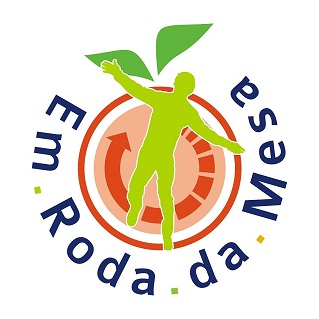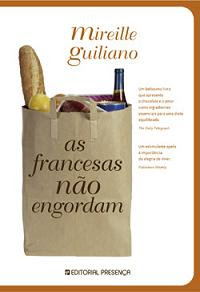Tendo em conta a busca constante de alternativas ao tradicional açúcar, aqui coloco um artigo do The Times,publicado dia 7 deste mês:
Following a report last week that claimed artifical sweeteners can actually lead you to absorb more calories I have received lots of letters about “healthy” alternatives to sugar. I have answered some of your most common questions below.
My mum has told me to stop having diet drinks because the sweeteners will make me fatter. Surely this can’t be true?
We really do not know yet whether this is the case. Diet drinks, along with low-calorie fruit yoghurts and sugar-free squashes, for example, contain chemical substances that have no calories but are intensely sweet to the taste. They include substances such as aspartame, acesulphame and sucralose.
It has traditionally been assumed that these sweeteners are a good thing, because if you substitute a can of standard cola for a diet version, you are saving around 140 calories. However, research is now questioning whether things are as straightforward as this. New work carried out by Professor Soraya Shirazi-Beechey and her team from the University of Liverpool has discovered that some intense artificial sweeteners stimulate “sweet receptors” in our intestines that in turn increase the body’s capacity to absorb more sugar.
In theory, this could mean that having a diet drink or diet yoghurt may actually make you absorb more calories overall. There is not yet sufficient evidence to be able to say that this happens in practice and would lead to weight gain, but it is certainly a case of “watch this space”.
Despite the reassuring studies on the safety of intense sweeteners, many people prefer not to risk even the vague possibility that consuming them may be linked with anything from headaches to increased risk of cancer. Many people — including myself — play it safe by sticking to naturally calorie-free options such as water and products such as plain yoghurt with your own fruit added.
Is agave nectar better for you than sugar?
Agave nectar looks and tastes like honey, but comes from the cut stem of a Mexican plant known as the century or blue agave. The natural sweetness of agave comes from fruit sugar, also known as fructose, which raises blood sugar levels gently after eating. This helps to keep cravings for sweet foods at bay and our moods balanced. The slow digestion of agave gives it a glycaemic index of 40 — that of granulated table sugar (officially known as sucrose) is 68, and tends to send blood sugar high quickly, encouraging our bodies to store excess sugar as fat.
Fructose, and therefore agave nectar, is about a third sweeter than sugar, which means that you can get away with using a third less. In other words, you get the same sweetness using two thirds of a teaspoon of agave with 14 calories as in a teaspoon of sugar with 20 calories.
It can be used to replace sugar in both hot and cold drinks because it dissolves in both, in baking and on cereal or yoghurt. The dark, unfiltered “rich” version of agave has a maple syrup-like taste and is best for baking, while the “mild” version is good for drinks and cereal.
Granulated forms of fructose are also widely available in supermarkets these days and have similar nutritional advantages.
I’ve seen a sweetener called ‘xylitol’ on some sugar-free mints and chewing gum. What is it and why is it linked with teeth on packaging?
Xylitol is a type of “bulk” sugar that is extracted from birch trees in Finland. Like fructose xylitol is sweeter than sugar, but in this case, twice as sweet. A teaspoon of granulated xylitol (available as Perfect Sweet or Xylobrit) has around 10 calories.
This natural sugar alternative comes with some intriguing health benefits. Research from Denmark has revealed that it significantly reduces levels of tooth decay by stopping decay-causing bacteria from flourishing in the mouth and also reduces the risk of middle-ear infections by moving from the mouth into the Eustachian tube, which connects the ear to the mouth, where it coats the tube lining and helps to stop bugs that cause infections from being able to attach.
With a glycaemic index of just 7, this is the lowest of all sweet substances from the natural world. Just one word of warning. Among its unique properties, xylitol has the ability to cool the temperature in your mouth, which means that it is great for sprinkling on fruit and yoghurt, and fantastic for cold drinks such as home-made lemonade, but is a bit confusing on your palette on, for example, a steaming-hot bowl of porridge.
It is important to note that xylitol, along with other bulk sweeteners like sorbitol, manitol and lactitol found in many sugar-free sweets, can all cause loose stools if over-consumed. Stick to limits advised by manufacturers.
Is honey better for you than sugar?
From a calorie point of view, honey provides 288 calories per 100g and sugar 394 calories, so gram for gram, it offers a saving. In reality, because honey is rather dense, a heaped teaspoon weighs 17g and provides 49 calories compared with a heaped teaspoon of sugar weighing just 6g with 24 calories. This is worth remembering if doing a straight swap of honey for sugar in drinks or yoghurts.
From a general health perspective, honey is probably better than sugar. It has been used for thousands of years to treat a wide variety of ills including everything from stomach pains to gut disorders, which we now call irritable bowel syndrome. It has also traditionally been applied directly to wounds.
Modern research has shown that these medicinal uses could be down to the fact that many strains of honey contain antimicrobial compounds capable of killing off a wide variety of disease causing bacteria including Helicobacter pylori, which triggers stomach ulcers, and Listeria monocytogenes and Bacillus cereus, which can trigger food poisoning.
I’ve had stevia sugar alternative in the United States, but can’t seem to find it in the UK. Why is this?
Stevia is another intense sweetener and comes from a Paraguayan shrub known as Stevia rebaudiana. It has not yet won safety approval for use in Europe, but this is under review by the European Food Standards Agency, which means that it may one day end up in drinks and foods here as well as in the United States.

